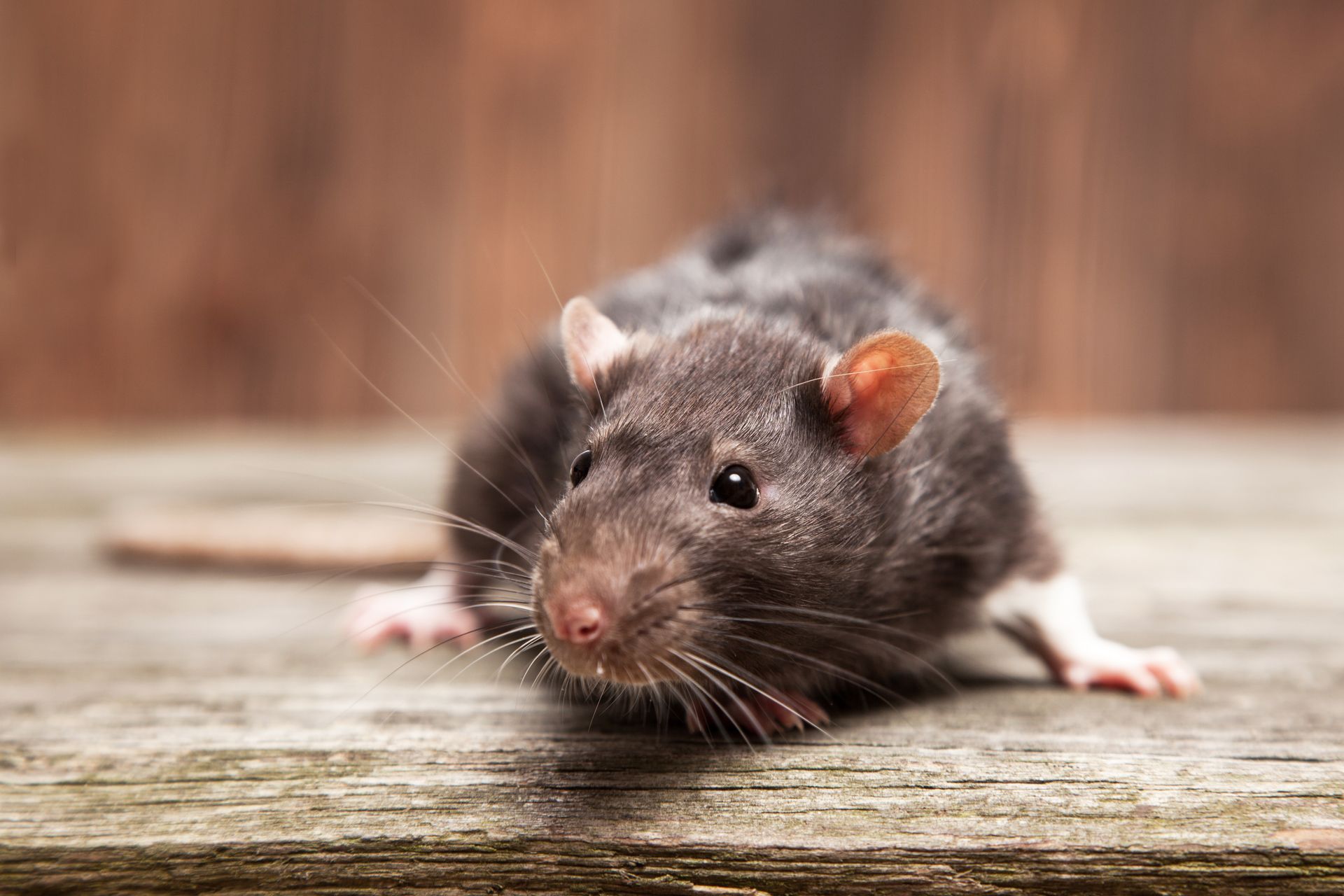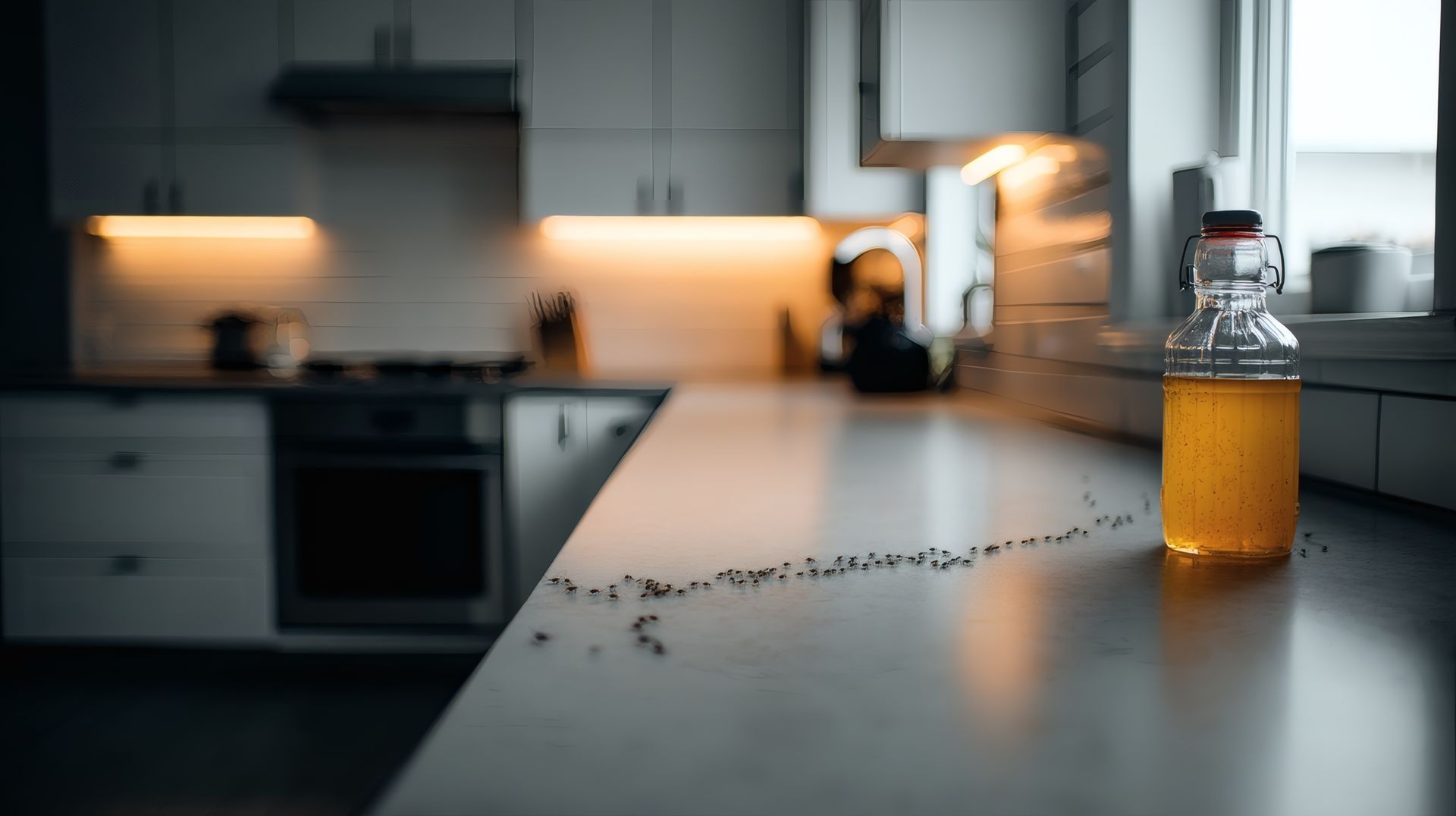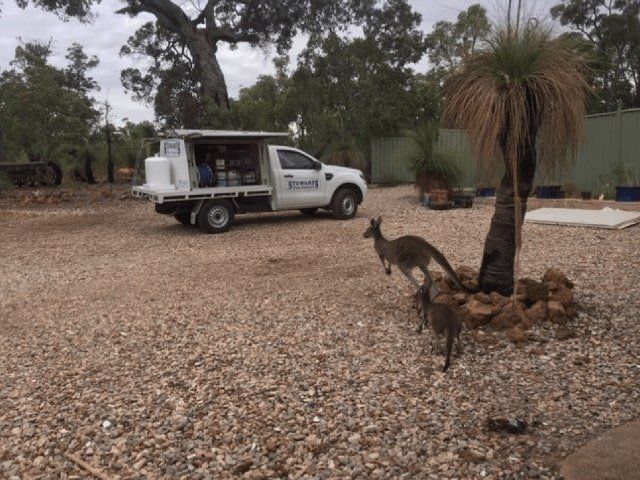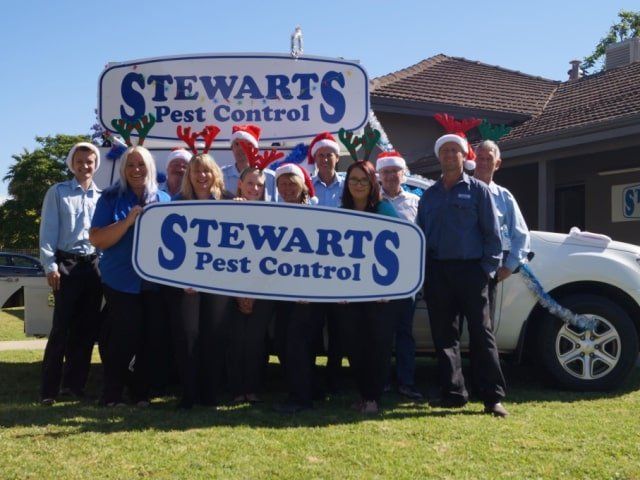What Attracts Cockroaches Them and How to Get Rid of Them for Good
- By Stewarts Pest Control
- •
- 29 May, 2025
- •
Have you ever turned on the kitchen light late at night only to see a cockroach scurry out of sight? If so, you're not alone. Cockroach infestations are a widespread problem in Perth, and they’re not just an unsightly nuisance—they pose real health risks. These pests are experts at hiding, breeding rapidly, and contaminating surfaces. That’s why it’s important to understand what attracts them and how to eliminate them for good. With over 60 years of experience, Stewart Pest Control offers expert solutions for long-term cockroach control in Perth.
In this blog, we’ll explore why cockroaches thrive in our region, how to spot the signs of an infestation, and most importantly, the most effective methods to remove them and prevent them from coming back.

Why Cockroaches Thrive in Perth Homes
Common cockroach species in Perth include:
- German cockroach: Small, fast-breeding, and commonly found in kitchens and bathrooms.
- American cockroach: Larger in size, often nesting in sewers and drains.
- Australian cockroach: Found in warm, moist outdoor areas but frequently enters homes.
These insects are nocturnal and prefer dark, humid environments such as under sinks, inside cupboards, behind fridges, and in wall cavities. They feed on almost anything, including crumbs, grease, paper, and even glue.
In Perth, older homes with gaps in walls, poorly sealed pipes, and neglected outdoor areas are particularly vulnerable. Even clean homes can fall victim, especially if neighbouring properties are infested.
What makes them truly difficult to deal with is their breeding rate. A single female German cockroach can produce hundreds of offspring in just a few months. That’s why early detection and prompt action are critical to keeping infestations under control.
Signs of a Cockroach Infestation
Cockroaches are experts at staying hidden during the day, so by the time you see one in plain sight, there could already be dozens more hiding nearby. Recognising the early warning signs of an infestation can make all the difference when it comes to effective treatment.
Common signs include:
- Live or dead cockroaches: Especially around sinks, kitchen appliances, and skirting boards.
- Droppings: These resemble small black pepper-like specks and are often found in cupboards, drawers, or along baseboards.
- Egg casings (oothecae): Small, brown, oval-shaped casings left behind by female cockroaches.
- Unusual odours: Large infestations may produce a musty or oily smell that lingers in affected areas.
- Smear marks: Brownish streaks found on horizontal surfaces where cockroaches are active.
Homeowners often overlook early signs, mistaking droppings or egg cases for dust or food debris. It’s also common to ignore a single sighting, but remember: cockroaches are nocturnal, and spotting one during the day usually means their hiding spots are overcrowded.
Infestations often start in high-moisture areas like bathrooms, kitchens, and laundries. If you suspect cockroaches are present, inspecting under sinks, inside appliances, behind cabinets, and even behind wall hangings can reveal hidden populations.
At Stewart Pest Control, our experienced technicians conduct thorough inspections to identify the scope and source of the infestation before recommending the most effective treatment plan.
Health Risks Associated with Cockroach Infestations
Cockroach infestations aren’t just unsettling—they can be hazardous to your health. These pests are known carriers of bacteria and pathogens that can spread throughout your home.
Key health risks include:
- Food contamination: Cockroaches frequently crawl through garbage, drains, and sewage before walking across food and prep surfaces.
- Bacterial transmission: They can carry Salmonella, E. coli, and other harmful bacteria that cause food poisoning, gastroenteritis, and other infections.
- Allergy triggers: Cockroach saliva, droppings, and shed skin can trigger allergic reactions and worsen asthma, particularly in children and the elderly.
- Contamination of utensils and packaging: Even sealed containers aren’t always safe, as cockroaches can chew through paper and thin plastic.
The risk isn’t just theoretical. Cases of food poisoning, particularly in restaurants and shared housing, have been directly linked to cockroach infestations.
In Perth, where high humidity and warm temperatures allow roaches to thrive year-round, the potential for disease spread increases. Poor ventilation and water leaks further support cockroach activity, especially in apartment complexes and multi-dwelling units.
If you suspect a cockroach issue, don’t wait until someone gets sick. Professional cockroach pest control can protect your household's health and eliminate these disease-carrying pests from your property.
DIY Cockroach Control: Why It Often Fails
When faced with a cockroach problem, many homeowners turn to supermarket sprays, bait stations, or home remedies. While these can kill a few visible pests, they rarely address the real issue: the hidden colony.
Common DIY pitfalls include:
- Only treating visible areas: Sprays may kill individual roaches but don't reach nests behind walls or under flooring.
- Using the wrong bait: Different species have different feeding habits, and generic bait doesn’t always work.
- Inadequate placement: Poor positioning of traps and bait stations limits effectiveness.
- Underestimating breeding speed: Killing a handful of roaches won't stop a colony producing dozens more each week.
- Overuse of sprays: Cockroaches can develop resistance to over-the-counter products.
Homeowners may spend weeks trying to eliminate roaches, only to see them return even more aggressively. DIY attempts can also drive cockroaches deeper into hiding, making professional treatment more difficult.
Additionally, store-bought products can be unsafe if not used correctly, particularly around pets and children.
Instead of wasting time and money on short-term fixes, a professional service like Stewart Pest Control ensures complete and safe cockroach extermination, backed by expert knowledge and tailored strategies.
Stewart Pest Control’s Professional Cockroach Treatment Process
At Stewart Pest Control, we take cockroach infestations seriously. Our proven process targets both visible pests and hidden colonies, delivering long-lasting results for Perth homes and businesses.
Our cockroach control process includes:
1. Comprehensive inspection: We assess your property inside and out, identify the species, and locate the breeding sites.
2. Species-specific baiting: Our baits are selected based on the roach species and are carried back to the nest, ensuring colony eradication.
3. Residual barrier sprays: Applied in cracks, crevices, and high-traffic areas to prevent reinfestation.
4. Safe, family-friendly solutions: All our products are low-toxicity and safe for use around kids and pets.
5. Follow-up and prevention advice: We provide tailored recommendations for keeping your property roach-free.
Our team is experienced in handling all types of infestations—from minor outbreaks in residential kitchens to serious infestations in commercial kitchens or warehouses. We also specialise in cockroach treatment Perth properties require year-round, due to the ongoing risk of reinfestation from neighbouring homes or external environments.
With flexible appointment times, competitive pricing, and guaranteed results, Stewart Pest Control is the trusted name in cockroach pest control Perth residents can count on.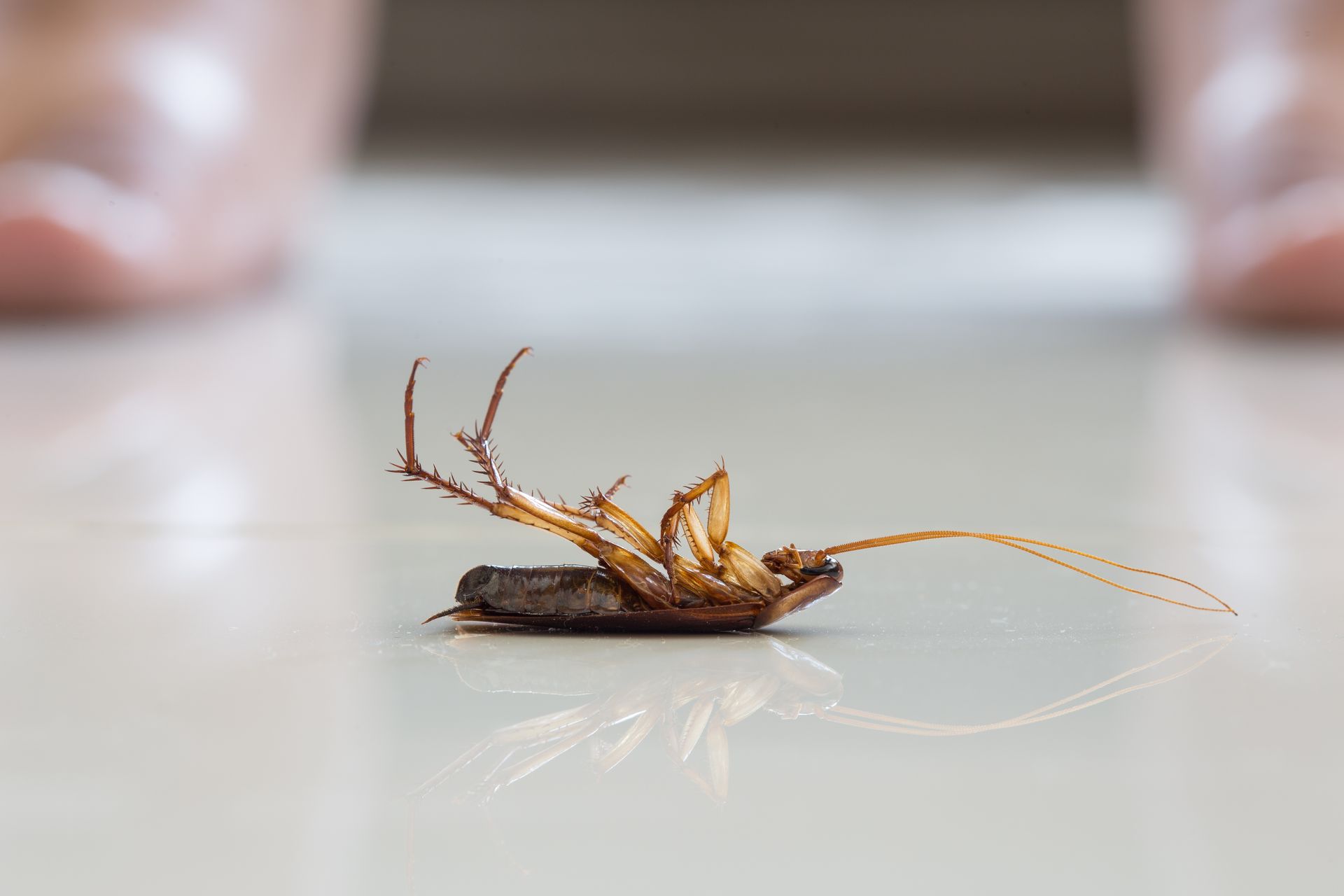
Tips to Prevent Cockroaches in Your Home
Once a cockroach infestation has been resolved, prevention is the key to long-term success. Small lifestyle changes and regular maintenance can drastically reduce the chance of a recurrence.
Effective prevention tips include:
- Seal entry points: Use caulk to close gaps around doors, windows, and plumbing.
- Fix leaks: Repair dripping taps, leaking pipes, and poor drainage, which create the damp environments cockroaches love.
- Keep your kitchen clean: Wipe down benches, sweep floors, and avoid leaving dirty dishes overnight.
- Store food properly: Use sealed containers and avoid leaving food out, especially pet food.
- Take out the rubbish regularly: Dispose of food waste daily and use bins with tight-fitting lids.
- Declutter storage areas: Cardboard boxes and paper attract cockroaches looking for shelter and nesting material.
Outdoor maintenance is also important. Keep garden beds tidy, trim vegetation away from walls, and ensure rubbish is stored away from entry points.
Regular inspections from professionals are also a smart move, especially for homes in high-risk suburbs. Stewart Pest Control offers ongoing prevention plans and check-ups tailored to Perth households.
Don’t Let Cockroaches Settle In
Have you seen one too many cockroaches creeping around your home lately? Don’t ignore the signs or rely on short-term fixes. Cockroach infestations in Perth are more than just unpleasant—they’re a risk to your health, hygiene, and comfort.
Understanding what attracts cockroaches, identifying early warning signs, and taking immediate action with professional help is the key to long-term control. At Stewart Pest Control, we combine expert knowledge with proven methods to deliver safe, reliable cockroach control in Perth.
Say goodbye to hidden nests, sleepless nights, and ineffective sprays. Contact Stewart Pest Control today to schedule your inspection or get a free quote. Visit https://www.stewartspestcontrol.com.au to book your service and take the first step toward a pest-free home.
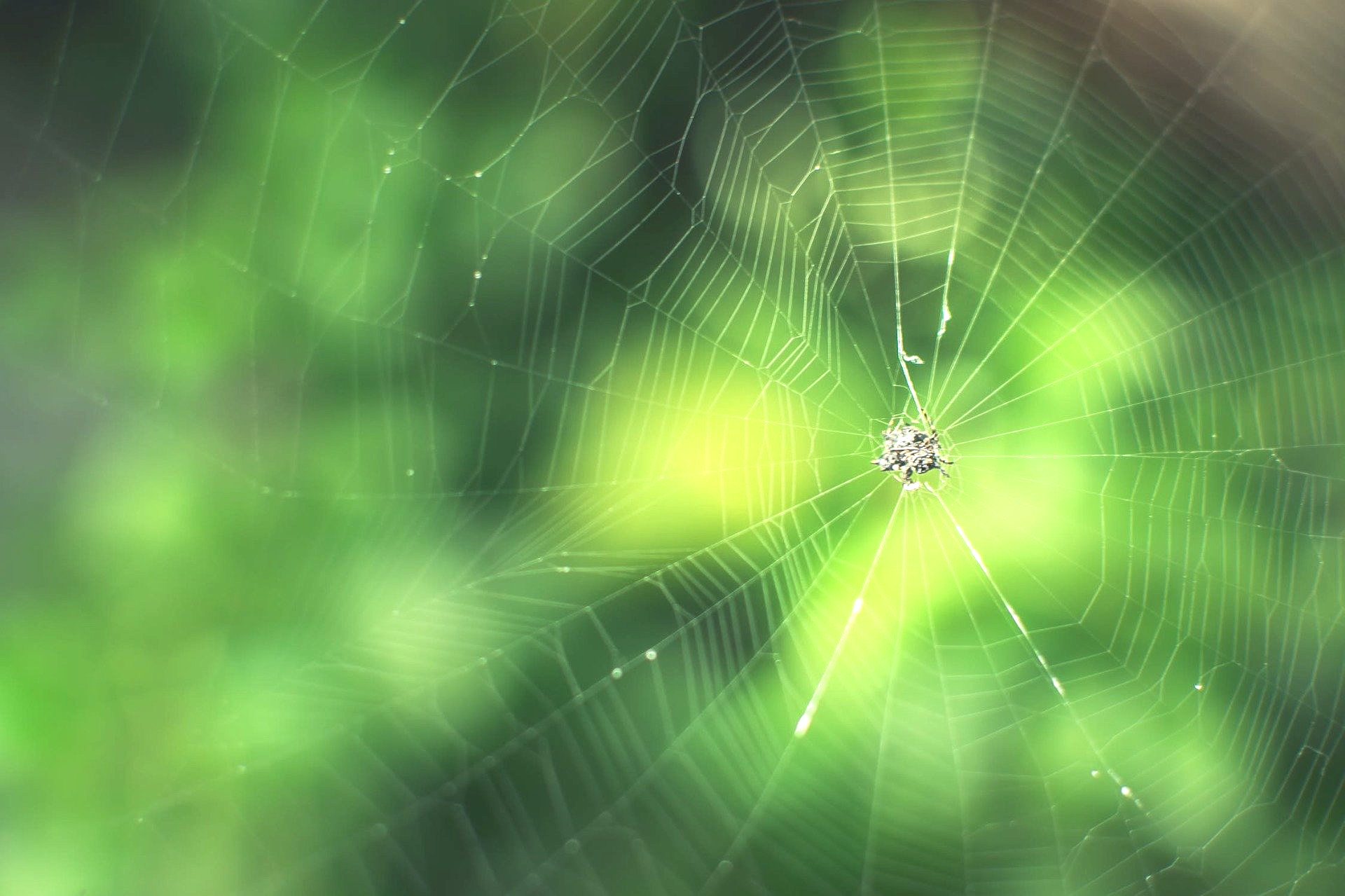
Have you ever walked into a room only to find a large spider on the wall or hanging from the ceiling? It’s a heart-stopping moment many Perth residents have experienced. While some spiders are harmless and even helpful in controlling other insects, others can pose real health risks, especially to children and pets. Whether it’s venomous bites or unwanted webs in every corner, spiders are a common nuisance that homeowners would rather live without.
At Stewart Pest Control, we understand the discomfort and anxiety that come with unwanted eight-legged visitors. With over 60 years of experience protecting WA homes, we offer effective spider pest control solutions that give you peace of mind year-round. In this guide, we’ll break down the most common spiders in Perth, why infestations happen, and what you can do to protect your home inside and out.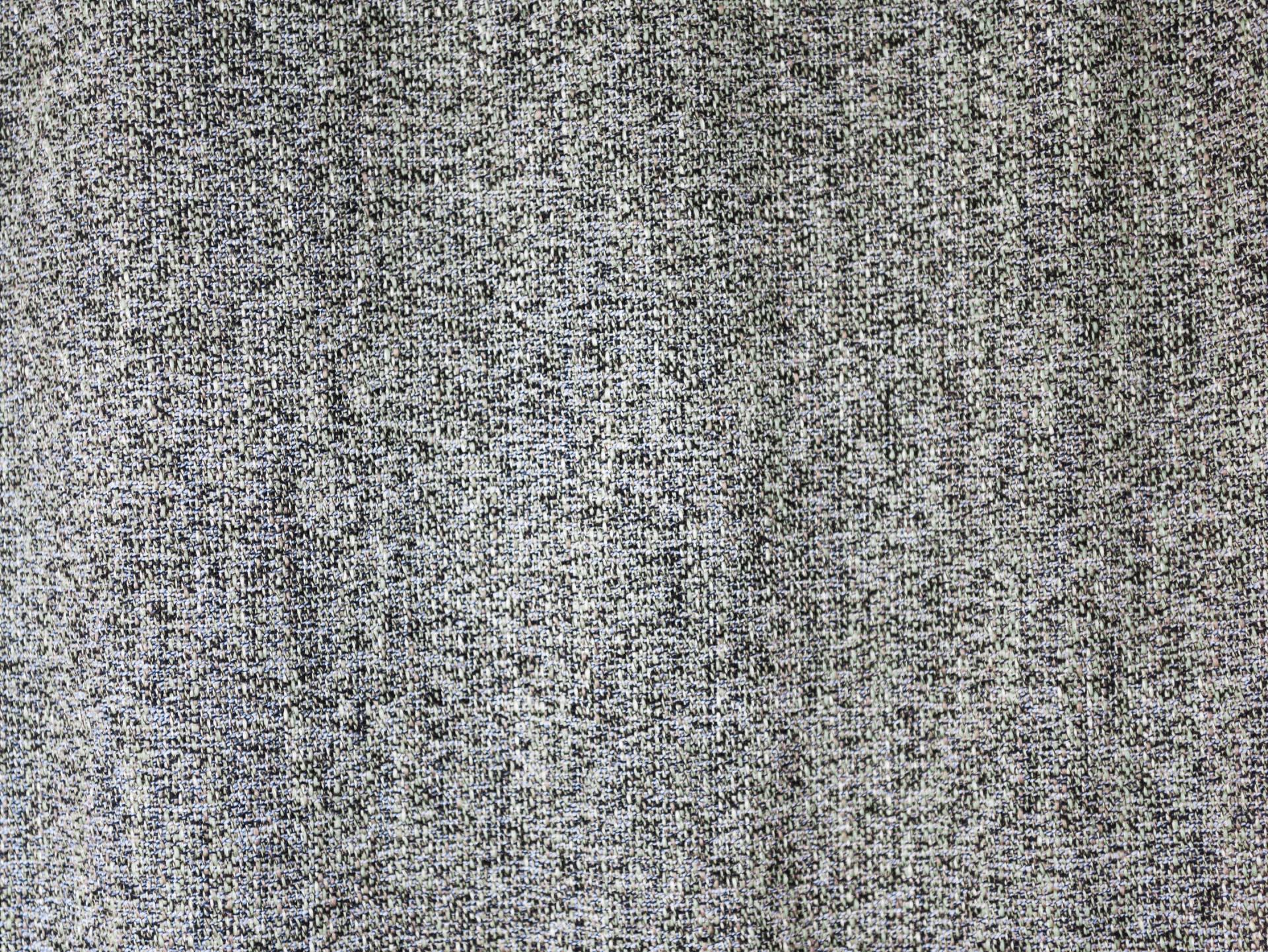
Recently I had found an infestation of variegated carpet beetles at my house. If it had not been for the fact that I work for a Pest Control Company then I would have not thought much of their larva. To determine if they are present in your house the easiest way to check is the carpet edging up against the wall for the larva.
Once I had realized that I had carpet beetles, I spring cleaned the house, vacuuming every room and had the carpets steam cleaned. Then one of our operators came in and treated all areas of the house including the roof. The roof may seem like a weird place for the beetles to get into but the our experienced operator informed me that they always seem to get into the roof. He was right too because a few days later on a table where there was a small crack in the cornicing of the roof I found dead larva that had fallen threw.
The encounter with this pest was not a pleasant experience; I count myself lucky that only minimal damage was caused because of the fact of early detection. I have bug specimens at home that were stored in a spare room. These specimens were literally turned to dust by the larva breeding and eating the dead bugs. A large number of beetles were found around this area. Unfortunately for many people it is more important items like flooring rugs and pillows or bedding that gets attacked.
Once carpet beetles have been detected treatment is essential, ignoring the problem will not make then go away, they will just increase in number and attack more aggressively. To discuss treatments or to find out more information contact us.
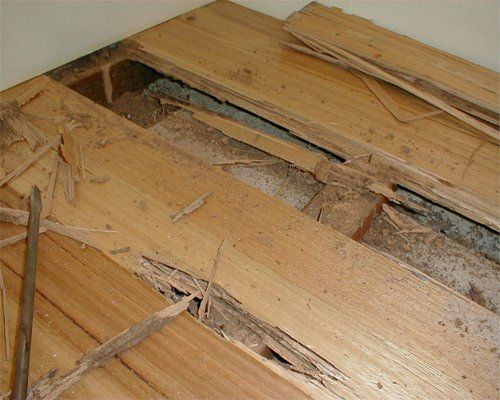
Wood flooring over concrete or other floors are a disaster waiting to happen!
Although very attractive, comfortable and easy to clean, parquetry and other decorative wood floor finishes layed on concrete or other surfaces can be a termite trap waiting to happen. Even if there has been a termite treatment carried out on the building, there is still a large risk of having more termite damage than if there were no wood over concrete or other floors.
Stewarts are getting an increasing number of people each week with the problem of termites eating their expensive decorative wood flooring. With the popularity of this type of floor covering increasing, it will be a problem for StewartS and building owners to contend with for many years.
A large portion of the problem lies with the original building design. Although a building may be built properly with its concrete or wooden floor, the design of a concrete floor building does not facilitate the problems that may occur with a wooden floor.
The Australian Standard for sub floor clearance in a wooden floor building is a minimum of 400 ml. This is to aid and allow access for Inspectors and their services (ie. Electricians, Pest Controllers, Plumbers, etc) although more importantly, the floor clearance aids air circulation which helps stop dampness, mould, fungus, rot and creates a less desirable place for termites.
Concrete floor buildings when built to the Australian Standards should have no problems with dampness, mould, fungus and wood rot. When you put a wooden floor over the concrete floor without the required space for air circulation or inspection etc., you open the door for a build up of dampness, mould, rot, fungus and termites.
Along with the above problem when termites have unrestricted access under or in between the wood layers, they can go anywhere in the building the wood floor takes them and be undetectable.
The wooden floor might not be of interest to the termites as a food source, but use it to obtain a more desirable source of cellulose food.
If the concrete floor is insufficient, has construction faults or cracks that the termites can enter through, finding the entry point of the termites or placing an adequate termite treatment, usually will result in destroying the wooden floor.
This can be a Pest Controller’s nightmare trying to track down termite entry points and secure a termite barrier, not to mention the building owners anguish and frustration.
Stewarts have found in most situations with modern concrete floor homes, termites have been able to breach the termite treatment or physical barrier to gain access to the decorative wood floor. In past experiences, it has been from an area where there is a join or break in the continuos concrete floor surface which usually occur with additions and alterations to the original floor.
Decorative wood floor problems with industrial or public buildings are far worse with no requirement at all for these buildings to have termite treatment or physical barriers when built. The nature and the way these buildings are constructed also allows for easier access of termites.
Stewarts have had clients with termite infestations in decorative wood flooring in many different situations like:
- The second floor of an office building in West Perth
- The sprung and suspended floor of a large indoor sporting club in Armadale
- The display window of a store in Hay Street, Perth
- The dance floor of a night club in Northbridge
- Many homes and normal offices on a regular basis almost daily
The treatment of termite infested decorative wood flooring is costly, not easy, and not fool proof. First Stewarts have to try and establish if:
- The termite problem is coming from under the floor
- Another area; or
- They are just eating the floor or using it as a mode of transport to get to other areas
If this cannot be established, then treatment methods must be adopted one by one to try and stop the attack in the least expensive way for the client and the least destructive way to the flooring and the building.
If the mode of entry has been established then Stewarts can carry out a more direct and effective method.
In severe situations, the decorative floor cannot be saved. These situation usually involve a concrete floor that is cracked or where the surface under the decorative flooring is not concrete and penetrable by termites. In such cases the floor will have to be grid drilled at 30cm intervals and injected with a Termiticide to try and form a continuous barrier under it. The ability to form a continuous barrier depends on the soil fill under the flooring. To do any of this usually the decorative floor would be destroyed by the drilling if the termites have not already done so.
Termite proof or treated timber used in decorative wood flooring does not stop any of the above mentioned problems. The termites will not eat it but they will still use it as a mode of transport to get to other parts of the building and to cellulose food. The same problems can exist with dampness, rot and fungus equally as well. All the problems in treating a normal decorative wood floor apply to a termite uneatable decorative wood flooring and associated termite problems including the possible destruction of the floor.
